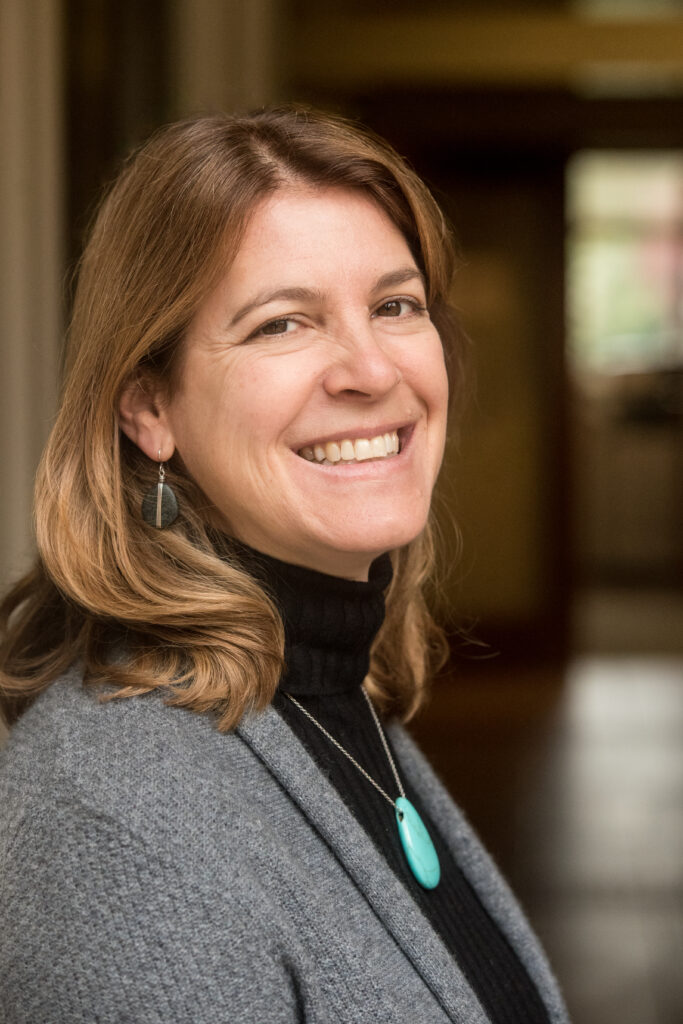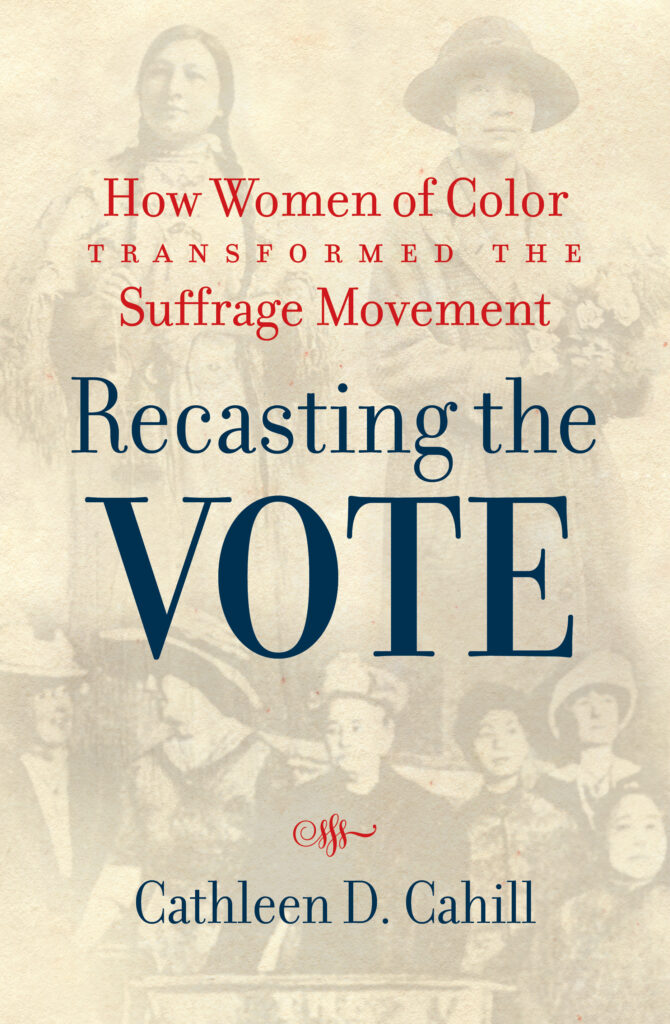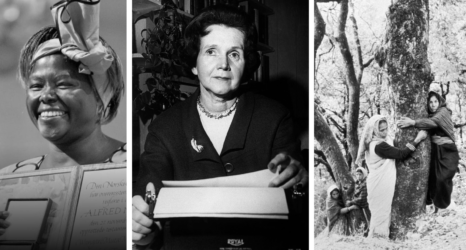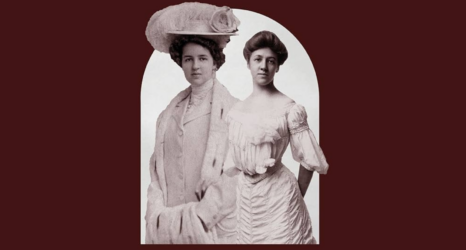
A few years ago, as the centennial anniversary of the 19th Amendment approached, I realized that most histories of suffrage focused on white women, usually those in the eastern United States.
At the time, I was teaching at the University of New Mexico and knew there were many suffrage stories about different groups of women from other parts of the country. So I set out to research them.
The result was Recasting the Vote (November 2020), a collective biography of six suffragists of color that encourages us to expand our understanding of who fought for the vote and why.
These suffragists—Yankton Dakota Sioux author and activist Gertrude Bonnin (Zitkala-Ša); Wisconsin Oneida writer Laura Cornelius Kellogg; Turtle Mountain Chippewa and French lawyer Marie Bottineau Baldwin; African American poet and clubwoman Carrie Williams Clifford; Mabel Ping Hua Lee, one of the first Chinese woman in the United States to earn her PhD; and New Mexican Hispana politician and writer Nina Otero Warren—show how women of color shaped the movement as political thinkers and intellectuals.
Chapter 1 of Recasting the Vote: How Women of Color Transformed the Suffrage Movement opens with three vignettes set in South Dakota in 1890:

- Young Gertrude Bonnin/Zitkala-Ša (Yankton Dakota) visits home after three years away at boarding school and struggles to reconnect with her family.
- Susan B. Anthony and her proteges, Anna Howard Shaw and Carrie Chapman Catt, canvass the state in support of that November’s woman’s suffrage referendum–which was on the same ballot with a referendum on enfranchising Native people.
- The massacre at Wounded Knee in December, in which federal troops of the Seventh Cavalry killed almost 300 Lakota men, women and children.
What do a young girl’s reunion, a suffragist speaking tour, and a horrific mass killing have in common—other than having occurred in the same time and place? In answering that question, I demonstrate that women of color were always active in suffrage debates and assert that our suffrage stories need to start in new places.

Women of color served as important symbols for white suffragists who didn’t always think about the actual circumstances of the women they referenced, as Shaw does here.
But women of color were fierce advocates for their communities. When Gertrude Bonnin argued for Native suffrage, she was also defending tribal sovereignty, insisting that the vote would “help Indians help themselves.”
We must actively seek out and listen to those women of color who were articulating a more inclusive and revolutionary vision of equality.
The following is an excerpt from Chapter 1 of Recasting the Vote:
Anna Howard Shaw contemplated the violence at Wounded Knee together with the results of the November referenda in South Dakota as she wrote her speech “Indians versus Women” for the second annual conference of NAWSA, convened in February 1891 in Washington, D.C.
It was a strange oration, full of contradictions as Shaw tried to reconcile the horrific violence against Native people, especially women and children at Wounded Knee, with her indignation that Native men seemed to enjoy greater support than white women for suffrage in South Dakota. Using a strategy she would employ again and again, she set up a contrast between the disrespect that educated, native-born white women received from white men and the solicitousness with which those men treated nonwhite men, Indian men in blankets, and Russian immigrants who spoke no English.
Shaw did not end there. She went on to meditate on the backbreaking and lonely work white women had done to improve homesteads on the windy plains. In the end, they had no property rights to the transformation they had wrought. Nor, she pointed out, did they have legal rights to their children in the new state. Surely their work of settlement, of transformation, had earned them full rights of citizenship; this was, after all, the promise of the American West. Shaw wanted it to apply to women as well.
Yet Shaw also expressed sympathy for Native women. To righteous applause and hisses, she described the plight of the women and children shot down by the Seventh Cavalry. Custer’s former unit had “murdered” them, she asserted.
Like white women, they, too, had grievances; they, too, lost their children; they, too, lacked a say in government. Native women likely would have disagreed that the legal restrictions on white women were the same as the genocidal violence they faced, but Shaw spent little time on the thought. In the next breath she returned to white women and derided Native men.
“Now I do not wish to say that Indians should not have rights, and ought not to have recognition; but it is exceedingly marvelous how little an Indian, or any other kind of a man, needs to know before he may be regarded as a valuable citizen, and how much a woman needs to know before she becomes any kind of citizen whatever.”
The tension in Shaw’s speech around sex and race would infuse her career and was one that dogged many white suffragists who could not separate their racial privilege from their gender disadvantage.
Anna Julia Cooper was dismayed by Shaw’s speech. Cooper, an African American activist and public school teacher in Washington, D.C., was frustrated that once again, white women were vilifying people of color in order to make claims for their own benefit.
Cooper was working on her book A Voice from the South, which she would publish the following year (1892). It included her thoughts in a chapter that she called “Woman versus the Indian,” reversing Shaw’s formulation and commenting directly on her ideas.
Cooper began with a strategy Black suffragists often used: appealing to white women’s better nature as a way of holding them to a higher standard than they were living up to in reality. She opened the chapter describing Shaw as “broad and just and liberal in principle” and praising her and Susan B. Anthony.
But, Cooper went on, it was precisely because she thought so highly of Shaw and Anthony that Shaw’s speech rankled her. She called on white leaders like Shaw to do better, arguing that they must fight for all women, not just themselves.
The Woman’s Movement, the “Reform of our day,” was, she insisted, the embodiment of universal good. “It is not the intelligent woman vs. the ignorant woman; nor the white woman vs. the black, the brown, and the red,—it is not even the cause of woman vs. man.”
No, she asserted, it was larger than that; it was a fight for “the final triumph of all right over might, the supremacy of the moral forces of reason and justice and love in the government of the nation.”
Anything less was “hitching our wagon to something much lower than a star.”
Adapted from Recasting the Vote: How Women of Color Transformed the Suffrage Movement by Cathleen D. Cahill. Copyright © 2020 by Cathleen D. Cahill. Used by permission of the University of North Carolina Press. www.uncpress.org
You may also like:





